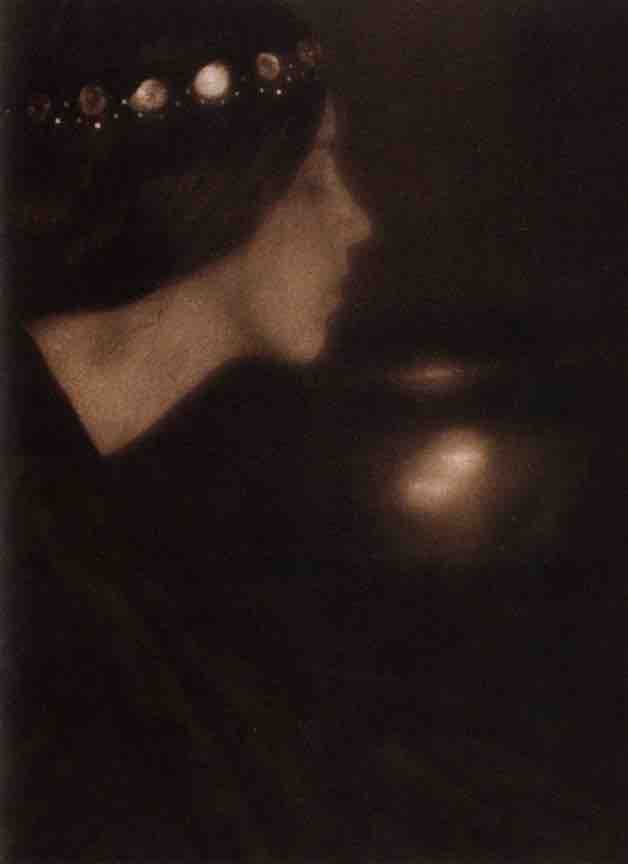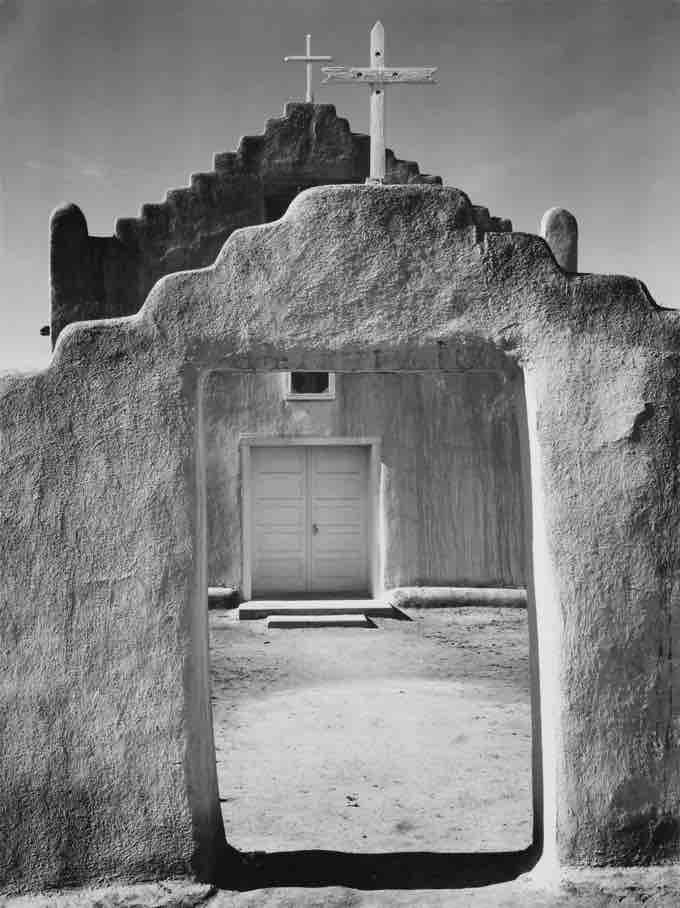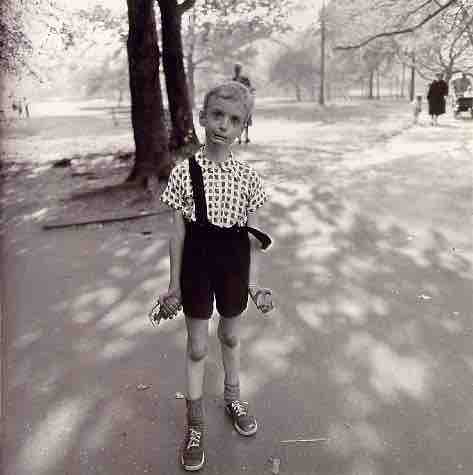During the 20th century, both fine art photography and documentary photography became accepted by the English-speaking art world and the gallery system. In the United States, pioneer photographers such as Alfred Stieglitz, Edward Steichen, John Szarkowski, F. Holland Day, and Edward Weston, spent their lives advocating for photography as a fine art. A culminating moment for pictorialism and for photography in general occurred in 1910, when the Albright Gallery in Buffalo bought 15 photographs from Alfred Stieglitz's 291 Gallery. This was the first time photography was officially recognized as an art form worthy of a museum collection.
Pictorialism
At first, fine art photographers tried to imitate painting styles, giving rise to Pictorialism, a style that uses soft focus to create a dreamy, 'romantic' look. Pictorialism dominated photography from about 1885 to 1915, though it was still being promoted by some as late as the 1940s. In general this term refers to a style in which the photographer has somehow manipulated what would otherwise be a straightforward photograph as a means of "creating" an image rather than simply recording it. Typically, a pictorial photograph lacks sharp focus (some more so than others), is printed in one or more colors rather than black-and-white (ranging from warm brown to deep blue), and may have visible brush strokes or other manipulation of the surface . For the pictorialist, a photograph, like a painting, was a way of projecting emotional intent into the viewer's imagination.

George Seeley, The Black Bowl
George Seeley, The Black Bowl, c. 1907. Published in Camera Work, No. 20, 1907, is a good example of a Pictorialist photograph due to its soft focus and painterly aesthetic.
As the harsh realities of World War I began to spread around the world, the public's taste for the art of the past began to change. Pictorialism gradually declined in popularity after 1920, fading out of popularity completely by the end of World War II. Weston, Ansel Adams, and others later began to move away from Pictorialism and created the Group f/64, which advocated for 'straight photography', or, the literal representation of a subject rather than an imitation of something else . During this period, the new style of photographic Modernism began to come into vogue, and the public's interest shifted to more sharply-focused images. As the developed countries of the world turned their focus to industrialism and growth, art reflected this change by featuring hard-edged images of new buildings, airplanes and industrial landscapes. Until the late 1970s several genres predominated, such as nudes, portraits and natural landscapes (exemplified by Ansel Adams).

Ansel Adams, Church, Taos Pueblo
Ansel Adams, Church, Taos Pueblo National Historic Landmark, New Mexico, 1942. From the series Ansel Adams Photographs of National Parks and Monuments, compiled 1941-42, documenting the period ca. 1933-42.
Snapshot Aesthetic
Beginning around 1963, the term "snapshot aesthetic" made its way into the vocabulary of the fine art photography world. John Szarkowski, who was head of the photography department at the Museum of Modern Art from 1962 to 1991, became one of the trend's largest promoters, and it became especially fashionable from the late 1970s until the mid 1980s. The snapshot aesthetic typically features off-centered framing and everyday subject matter often presented without apparent link from image-to-image, relying instead on the juxtaposition and disjunction of individual photographs. Notable practitioners include Garry Winogrand, Nan Goldin, Wolfgang Tillmans, Martin Parr, William Eggleston, Diane Arbus and Terry Richardson . These photographers aimed not "to reform life but to know it" (John Szarkowski, Diane Arbus).

Diane Arbus, Child with Toy Hand Grenade in Central Park, 1962
Diane Arbus exemplifies the "snapshot aesthetic" in her work which presents images from the everyday.
Conceptual Photography
Conceptual Photography is a type of photography that illustrates an idea. There have been illustrative photographs made since the medium's invention, however, the term Conceptual Photography derives from Conceptual Art, a movement of the late 1960s. Today the term is used to describe either a methodology or a genre. Conceptual art of the late 1960s and early 1970s often involved photography that served to document performances, ephemeral sculpture or actions. The artists did not describe themselves as photographers. Since the 1970s, artists like Cindy Sherman, Thomas Ruff, and Thomas Demand have been described as conceptual. Although their work does not generally resemble the lo-fi aesthetic of 1960s conceptual art, they may have certain methods in common such as documenting performance (Sherman), typological or serial imagery (Ruff), or the restaging of events (Demand).
Cindy Sherman, Chromogenic Color Print, 1981
Cindy Sherman used a type of performance in her work by photographing herself dressed in costume, expanding the possibilities of the medium.
In contemporary photography, there is now a trend of carefully staging and lighting a picture, rather than hoping to "discover" it ready-made. Photographers such as Gregory Crewdson, and Jeff Wall are noted for the quality of their staged pictures. Additionally, new technological trends in digital photography have created the possibility of full spectrum photography, where careful filtering choices across the ultraviolet, visible and infrared lead to new artistic visions.